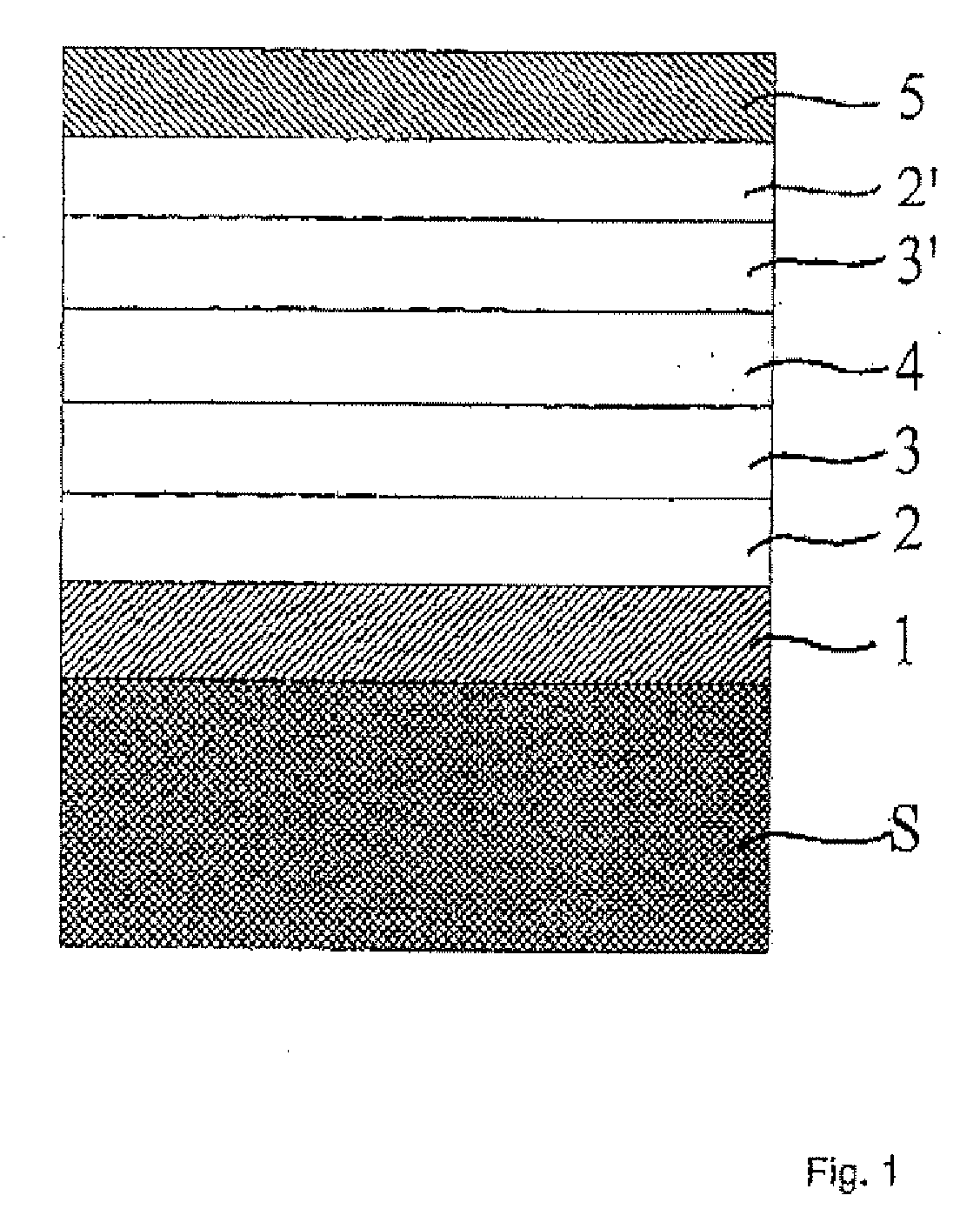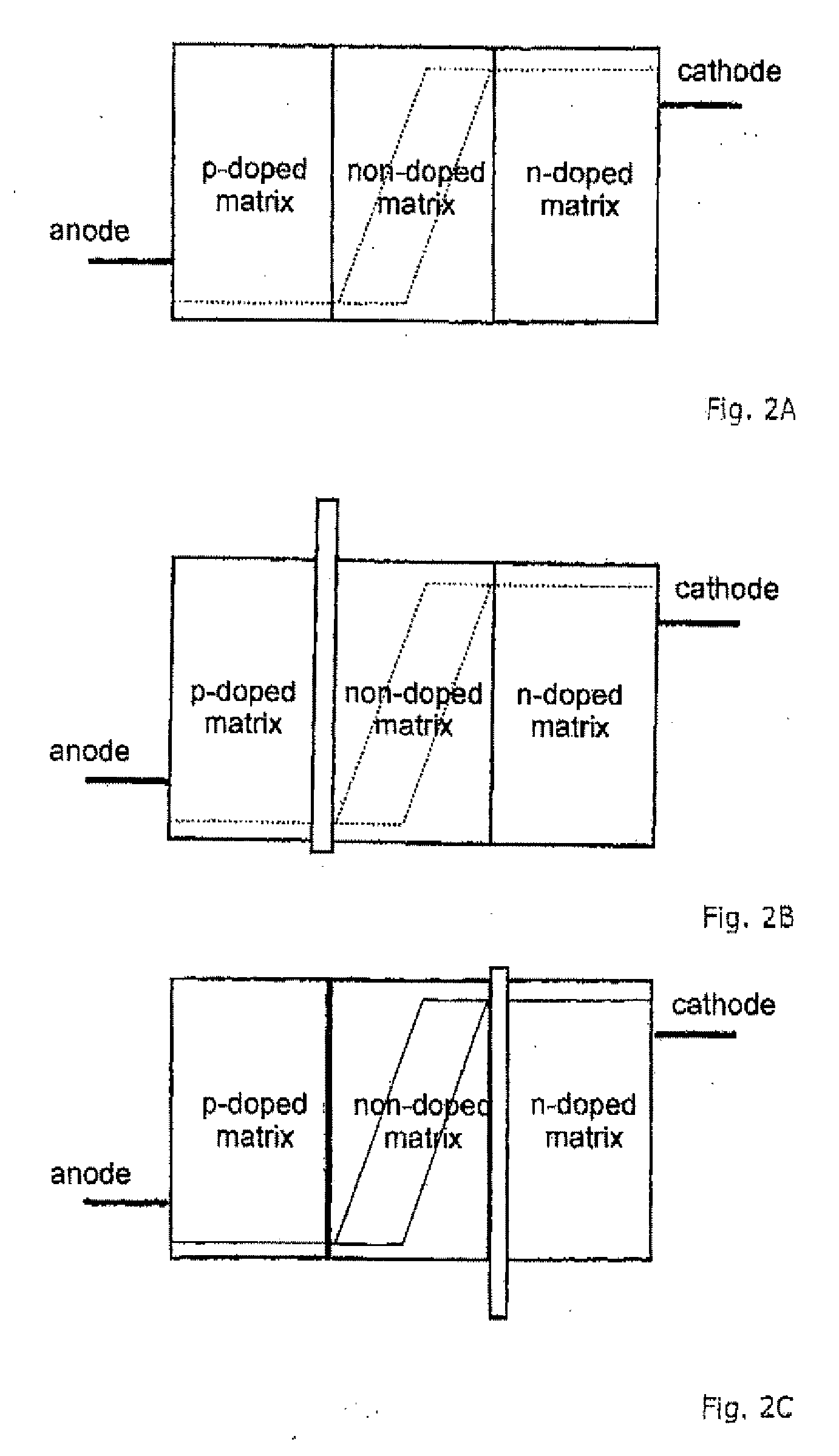Arrangement for an Organic Pin-Type Light-Emitting Diode and Method for Manufacturing
a light-emitting diode and organic technology, applied in the direction of discharge tube luminescnet screen, discharge tube/lamp details, electric discharge lamps, etc., can solve the problem of not necessarily the case, negative effect on the quantum yield of electroluminescence, and the inability to prevent possible exciplex formation, etc. problem, to achieve the effect of simplifying processing, facilitating quality assurance, and reducing investment and consumption costs for manufacturing plants
- Summary
- Abstract
- Description
- Claims
- Application Information
AI Technical Summary
Benefits of technology
Problems solved by technology
Method used
Image
Examples
Embodiment Construction
[0028] The invention is described as follows in greater detail on the basis of embodiment examples with reference to the Figures of the drawing. These Figures shows the following:
[0029]FIG. 1 a schematic illustration of a layer arrangement for a light-emitting structural element with multiple layers;
[0030]FIG. 2A to 2C schematic illustrations of energy levels for an arrangement of organic layers where at least two adjacent layers are made from the same organic matrix material;
[0031]FIGS. 3A and 3B a graphic illustration of characteristic data for the current density and the luminance as well as the current efficiency and the performance efficiency of a structural element on the basis of a structure according to an embodiment c′);
[0032]FIGS. 4A and 4B a graphic illustration of characteristic data for the current density and the luminance as well as the current efficiency and the performance efficiency of a structural element on the basis of a structure according to an embodiment ...
PUM
 Login to View More
Login to View More Abstract
Description
Claims
Application Information
 Login to View More
Login to View More - R&D
- Intellectual Property
- Life Sciences
- Materials
- Tech Scout
- Unparalleled Data Quality
- Higher Quality Content
- 60% Fewer Hallucinations
Browse by: Latest US Patents, China's latest patents, Technical Efficacy Thesaurus, Application Domain, Technology Topic, Popular Technical Reports.
© 2025 PatSnap. All rights reserved.Legal|Privacy policy|Modern Slavery Act Transparency Statement|Sitemap|About US| Contact US: help@patsnap.com



